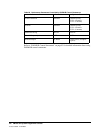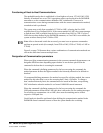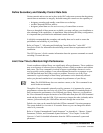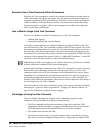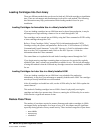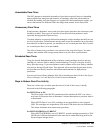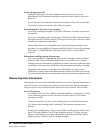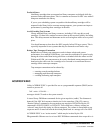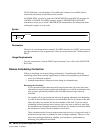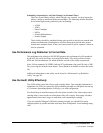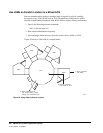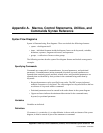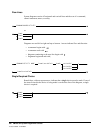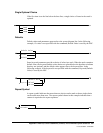
424 VM/HSC 6.0 System Programmer’s Guide
1st ed., 6/30/04 - 312579601
Ensure adequate free cells
Setting MNTD Float to ON can be defeated if there are no free cells in the
dismounting LSM. Dismounted cartridges are passed to other LSMs to find a new
home cell.
Use the Display Lsm command to determine the number of free cells in each LSM.
Use MOVe or EJect to create free cells if they are needed.
Eject through the CAP closest to the cartridge
If you eject a cartridge through the CAP of the LSM where it resides, no pass-thrus
are required.
If you eject a cartridge without specifying a CAPid, the cartridge is ejected through
the highest priority CAP that is not busy. This type of activity may cause one or more
unnecessary, nonproductive pass-thrus.
The recommended way to accomplish ejects without affecting performance with
pass-thrus, is to use multiple CAP option on the EJECt utility. By specifying multiple
CAPs (that is, CAP(000,001,002)), the desired effect (that is, no pass-thrus) is
achieved.
Redistribute cartridges during off-peak times
You can use the MOVe command and utility to move cartridges within an LSM or
between LSMs. The Scratch Redistribution utility can be used to move scratch
cartridges between LSMs until an equilibrium is reached. Each inter-LSM movement
of cartridges causes pass-thrus which delay robot movement in mounting a cartridge.
Depending on the number of cartridges to be redistributed, you may prefer to
schedule moves and scratch redistribution during periods of low data center activity.
The redistribution runs faster and performance is not affected during off peak times.
Reduce Operator Intervention
Although the ACS runs mostly unattended, situations occur where operator intervention is
required. Excessive and unnecessary operator intervention impacts library performance.
There are specific ways in which operator intervention can be reduced. These include:
Set CAP Preference
In a multiple-LSM ACS, the CAPPref command establishes an ordered list of CAPs
to use should the operator or HSC start an activity that requires a CAP without
specifying a CAPid.
To motivate operators to enter or eject cartridges faster, set CAPPref such that the
CAP closest to the cartridge racks is preferred. This minimizes operator travel
distance.
In large ACS configurations, of five or more LSMs, consider setting CAPPref such
that a CAP in the middle of the ACS has the highest priority. This may make the
operators walk further, but it reduces the number of pass-thrus should the default
(highest priority) CAPid be used for ejecting cartridges.



